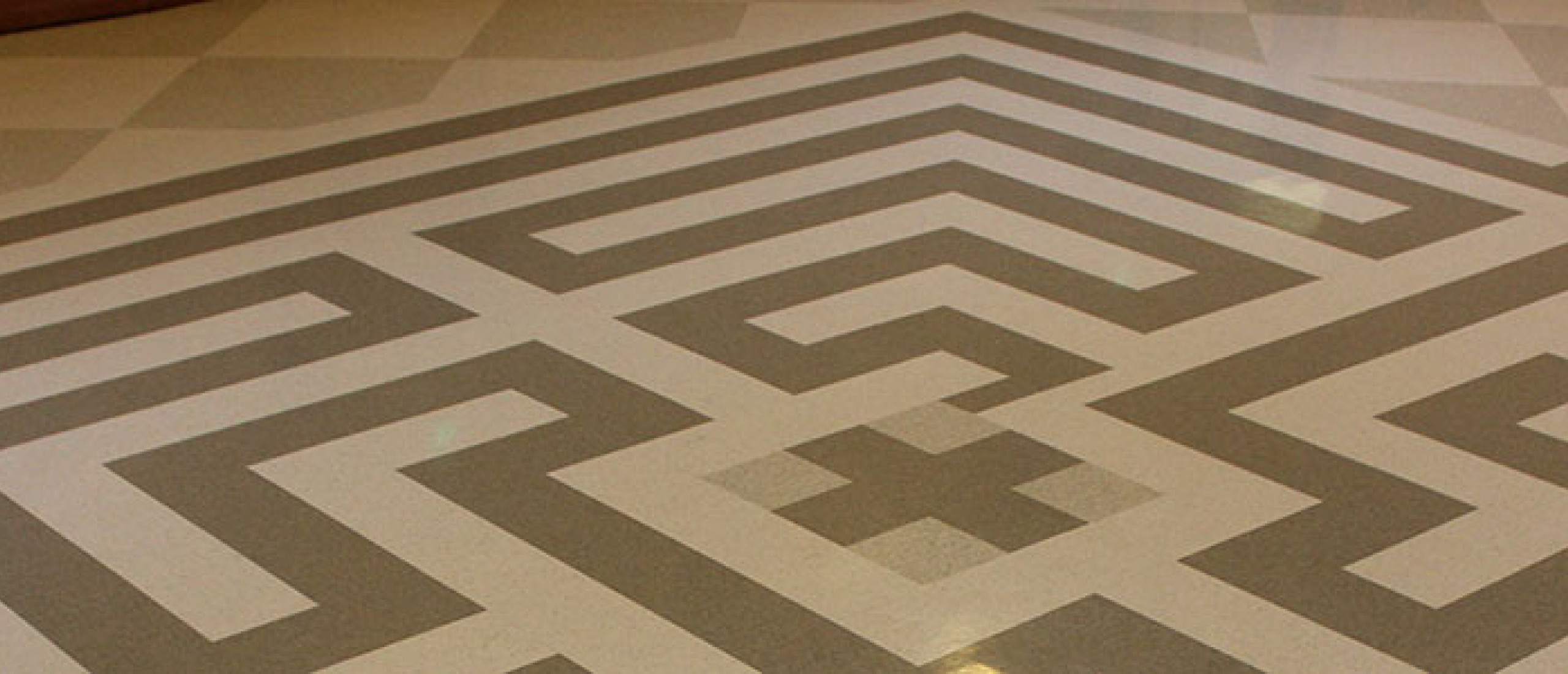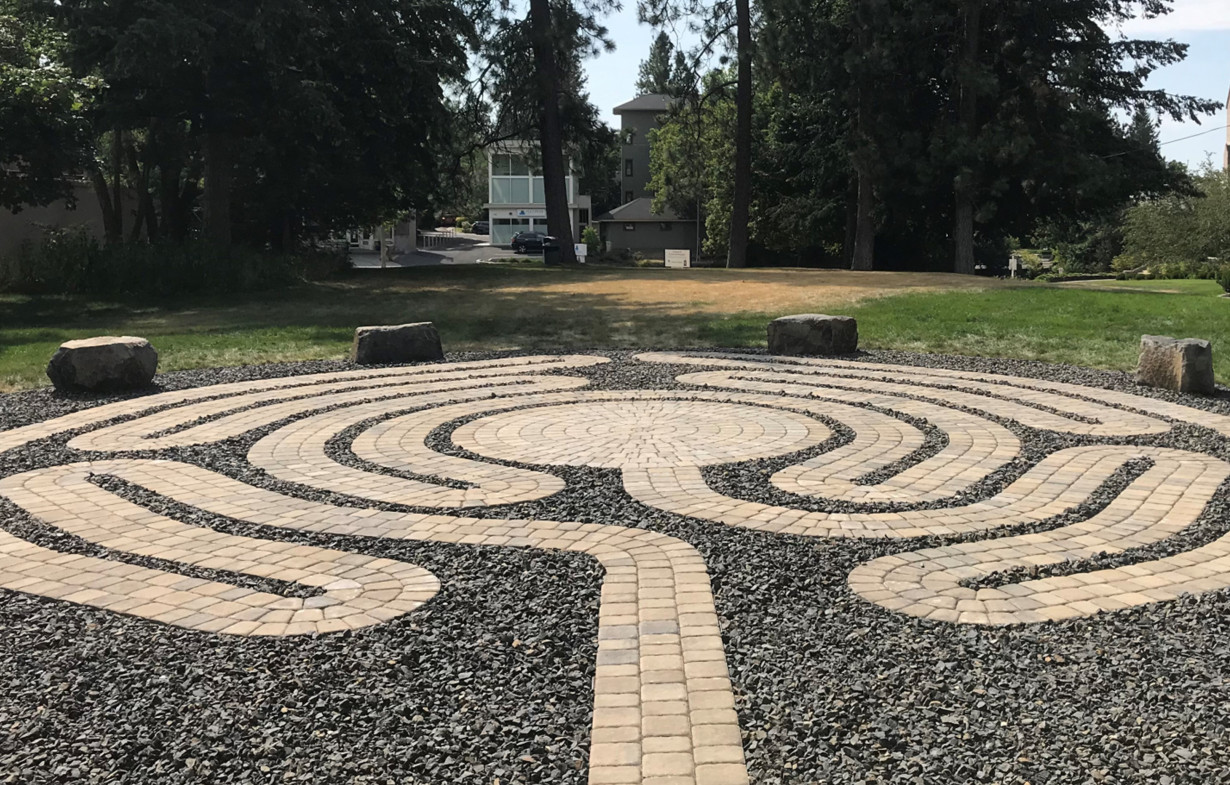St. John's Cathedral is fortunate to own a lovely canvas labyrinth, in the eleven-circuit style found in many churches. This labyrinth usually is in the North Transept of the Cathedral, May through September, for meditation and prayer. Contact the Cathedral office for more information. This labyrinth is not available at this time.
During August of 2013, a second, permanent, labyrinth was installed in the tile floor of the Great Hall. This presentation is an adaptation of an ancient North African design, which is a square instead of a circle. This labyrinth usually is available 10am-3pm, Monday through Friday.
In summer of 2020, an outdoor labyrinth was created on the lawn just south of the Cathedral, with access from 12th Avenue. This labyrinth is available all of the time. Parking is usually available on the south side of 12th Avenue. The outdoor labyrinth is given in memory of Polly McMahon, a long-time Cathedral member.

